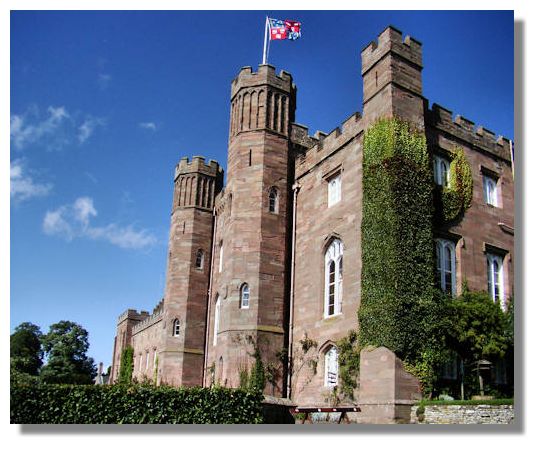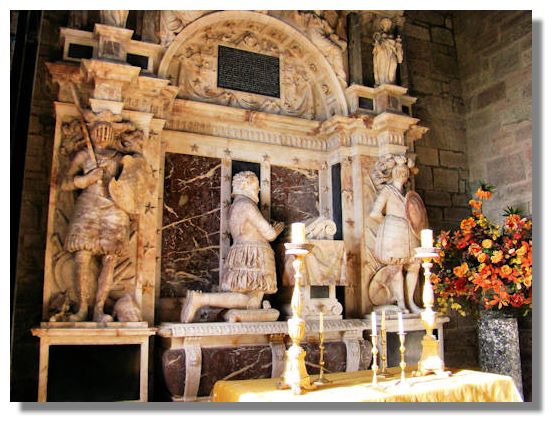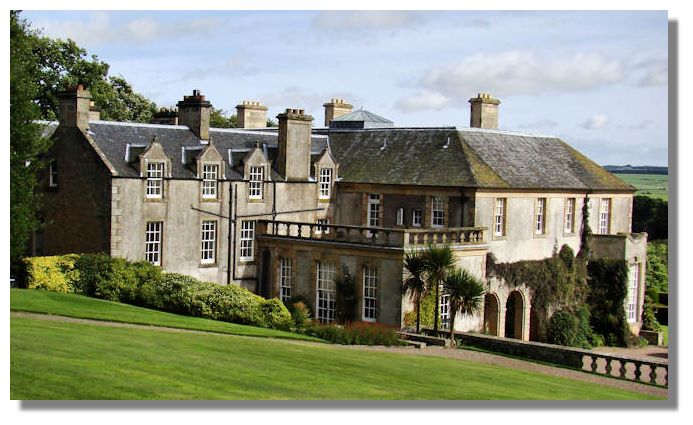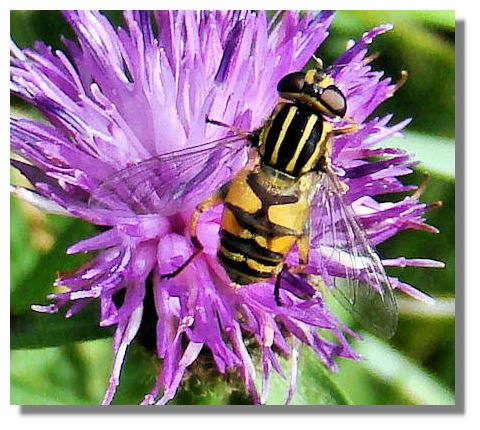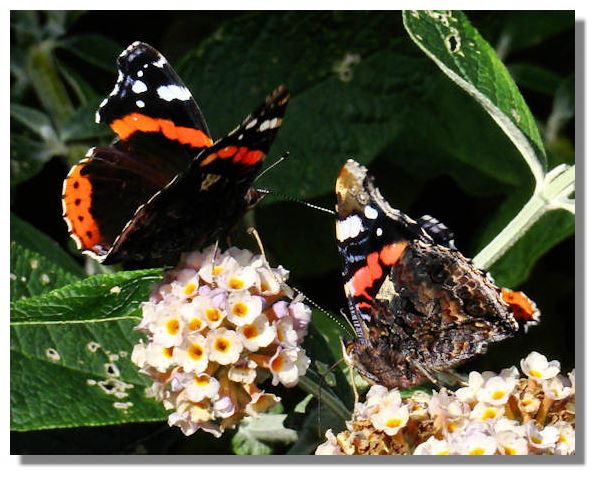The Rampant Scotland Newsletter includes a number of photographs which illustrate the weather and the seasons, plus the flora and fauna of the current week around Scotland. This separate "colour supplement" displays some more pictures, in a larger format. Here is this week's crop of Scottish views!
Although in its present form Scone Palace, a few miles north of Perth, is relatively "young" (a minor 16th century palace was recast in 1808 with a castellated roof to make it look more imposing), the area is steeped in history. Scone was an ancient gathering place of the Picts (the earliest inhabitants of northern Scotland with a name and history). Moot Hill, adjacent to the present palace, was where Scottish kings were crowned (on the Stone of Destiny until King Edward I carried it off to London in 1296). From 1114 to the Reformation in 1559, Scone was one of Scotland's major abbeys and was sometimes referred to as the Palace of the Abbots. Recent archaeological excavations have identified the outline of the old abbey. The Earls of Mansfield still live in Scone Palace which is now a major tourist attraction.
The ornate tomb of David Murray, the first Lord Scone, stands adjacent to Scone Palace, right on the top of Moot Hill. Sir David Murray saved King James VI from an attack by the Earl Gowrie in 1600 and was made Cup-bearer, then Master of the Horse and finally Captain of the Guard to King James VI. The King made him Lord Scone in 1605, awarding him the lands of Scone which had been forfeited by the Earl of Gowrie. By this time, James was on the throne of the United Kingdom and living in London. In 1621, Murray rose further in the rankings of the noblemen by being made Viscount Stormont. His descendants rose still further, becoming the Earls of Mansfield.
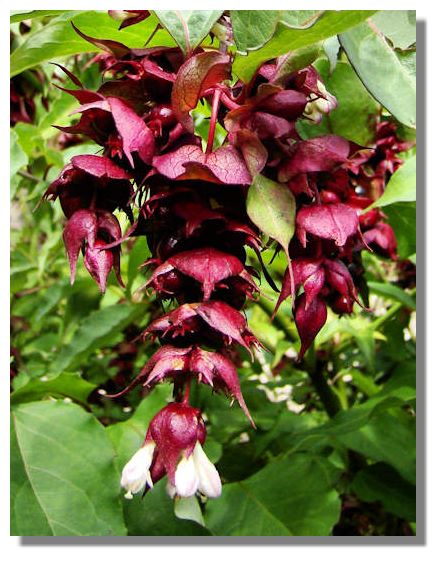
Leycesteria Formosa is also known Himalayan honeysuckle and Pheasant Berry - the long dangling tassels of the flowers appear in August/September and are followed by purple berries which are popular with many birds, not just pheasants. The flowers are only the small white petals at the end of the long, claret-coloured bracts in which the berries grow. Only one variety is strong enough to grow outdoors in Scotland and even that can be killed to ground level in really cold winters. But it springs back to life again in the spring and can be back to full height (six feet) in two growing seasons.
The National Trust for Scotland mansionhouse at Hill of Tarvit, near Cupar in Fife, was designed in 1906 by Hugh Lorimer (who had worked on the restoration of Kellie Castle ten miles away). Lorimer's design largely demolished the original 17th century Wemyss Hall to create a new building, which was given the the name of Hill of Tarvit Mansionhouse. The property had been bought by Frederick Bower Sharp, one of a family that had made their fortune in Dundee, where they manufactured jute products (including selling sackcloth for sandbagging to both sides during the American Civil War).
The European hoverfly's scientific name is "helophilus pendulus" which means "dangling swamp-lover". This colourful insect is a very common in Britain and occurs as far north as the Shetland Islands. As its name implies, it is often associated with bodies of water - lakes and rivers as well as small ponds. But it can also fly well away from water, visiting flowers (such as this knapweed) and resting on leaves.
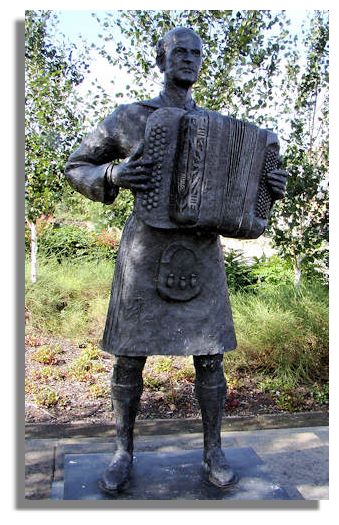
Jimmy Shand (1908-2000) became Scotland's best-known accordion player and leader of a band playing traditional Scottish dance music. This larger than life-sized sculpture is in the Fife town of Auchtermuchty where he lived for much of his life. The "King of Scottish Dance Music" began playing a mouth organ and then a fiddle at a young age and performed at events around Fife which augmented his income from being a miner. He made his first broadcast with "Jimmy Shand and his Band" in 1945 and rapidly became popular all over the country - and then in North America, Australia and New Zealand, including playing at Carnegie Hall in New York. In 1972 he went into semi-retirement and was made a freeman of Auchtermuchty in 1974, North East Fife in 1980 and Fife in 1998. He became Sir Jimmy Shand in 1999 - a long overdue honour. His portrait is in the Scottish National Gallery - close to fiddle player Neil Gow. During his career he wrote over 300 compositions - and recorded more tracks than the Beatles and Elvis Presley combined.
After a poor summer, it has been a delight to find increasing numbers of the major garden butterflies have been making a welcome appearance in some numbers. This picture shows very well the markings on the upper and lower wings of the brilliant Red Admiral. They were photographed in the garden of Hill of Tarvit in Fife - where over 30 were to be seen enjoying the Buddleja flowers, accompanied by even larger numbers of Peacock butterflies.If you want to look back at earlier editions of this Colour Supplement, there is an Index Page
